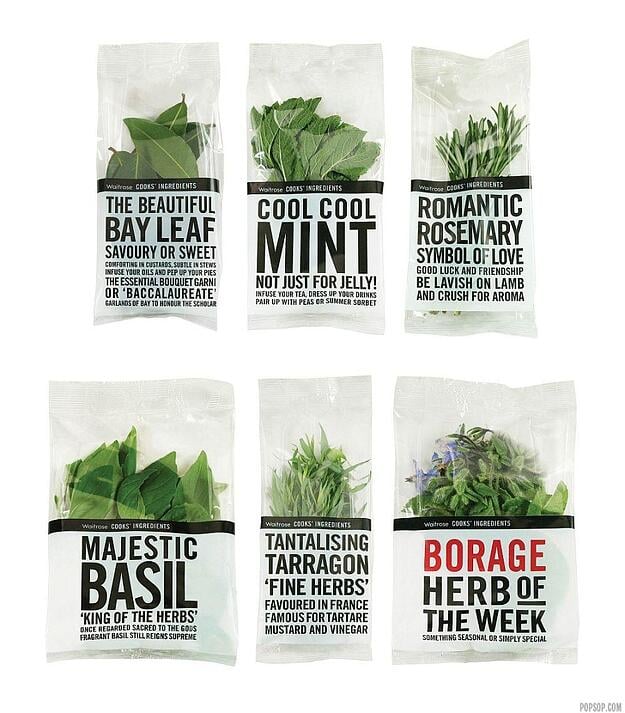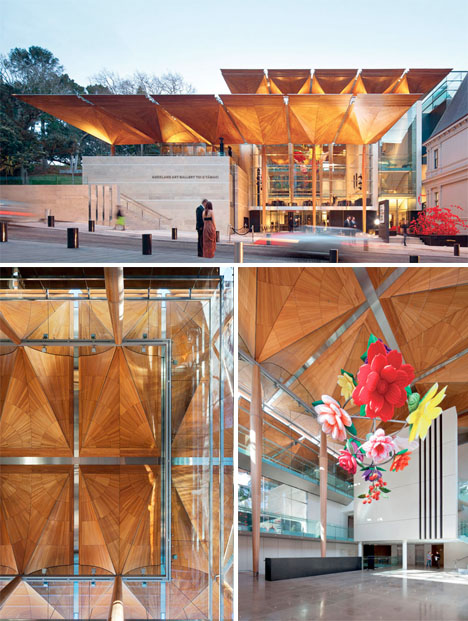Don't you just hate those agencies or architects who preface every mention of their name with "award-winning"? You know the types – smarmy, unapologetic, too big for their boots. Clients flock to them, other designers bow down to them, and they get invited to sit at the cool kidstable at conferences. Basically, they are scum.
Could it be … and I'm just postulating wildly here … that what you really want is to be one of those smarmy, self-righteous, award-winning designers yourself? Well, it's not good just sitting around waiting for it to happen. If you want to win a design award, you need to put yourself in the running.
I should know. I've won no less than 11 awards, grants and scholarships over the last ten years for my creative or academic work. I can tell you that there is a definite system to creating a good award application, and that, while you can never guarantee a win unless you bribe the judges, there are a few things you can do to increase your chances. So are you ready to enter design awards? Let's look at how to do it:
Step 1: Find Design Awards to Enter
 This courtyard is the winner of the GGN Tucker Design Award.
This courtyard is the winner of the GGN Tucker Design Award.Whether you're part of an agency designing marketing, web or print collateral for businesses, or you're an architect or designer working in construction, furnishings or another creative field, there is a design award out there to fit your style and talents. It's just a matter of finding the right award.
Make applying for awards part of your marketing strategy. Take some time each month to research new awards. Keep a record of different awards in a database on your computer. That way, you can access it at any time to see what awards are coming up.
So where do you find design awards to enter? Here are a few tricks:
- Look at the "About" pages of those "award-winning designers" you loathe. They'll mention the awards they've won. Now you can enter those awards, too!
- Are you a member of a professional organisation? They often keep lists of awards available to members. If not, asking around in the organisation should reveal some awards.
- Ask fellow designers within your network if they know of any awards.
- Subscribe to magazines or email newsletters within your niche that list awards.
- Look at community art community websites, as these often list awards.
- Google different criteria, such as "Design Awards Australia" or "Architecture Awards Sustainability" and see what you discover.
Here are a few to get you started:
Creative & Design Awards
- BIMA (British Interactive Media Awards)
- D&AD (Design & Art Direction) Awards
- HOW Design Awards
- Best Design Awards (The Designers Institute)
- SONY World Photography Awards
- PANZ Book Design Awards
- Young Designer Awards
- Red Awards (Retail Design)
- National Norwegian Graphic Design Awards
- A' Design Award
- Australian Design Biennale
- PRINZ Awards (PR)
- PR Daily's PR & Marketing Awards
- PR Week's Asia Awards
- Fairfax AdMedia Agency of the Year Award
- AdAge's Small Agency Awards
- A4's Advertising Awards
- iMedia Agency Awards
Architecture Awards
- New Zealand Architecture Awards
- AAA (Auckland Architecture Association) Unbuilt Architecture Awards.
- Architectural Review Awards
- AR+D Awards for Emerging Architecture
- World Architectural Festival
- MIPIM Architectural Review Future Projects Awards
- Bentley Be Inspired Architecture & Engineering Awards
- National Architecture Awards (Australian Institute of Architects)
- Brick Industry Association Brick in Architecture Awards
- Progressive Architecture Awards (Architect Magazine)
- WAN Urban Design Awards
- Architizer A+ Awards
- ISARCH International Award for Architecture Students
- Global Award for Sustainable Architecture (Locus)
- Royal Institute of British Architects RIBA Awards
- SPARK awards
Step 2: Choose the Right Awards
 These Waitrose Fresh Herbs won the Bronze Award in the EDAwards for Packaging Design
These Waitrose Fresh Herbs won the Bronze Award in the EDAwards for Packaging DesignNow that you've conducted the research and found several design awards, it's time to choose which you will enter.
Choosing the right award to enter is just as important – if not more so – than your application itself. For example, if you work predominantly in print, you won't win an award focused on digital media. Likewise, if you design homes in a modern, minimalist style, you won't place in a competition that favours traditional, highly decorative homes.
For each award you've discovered, ask yourself the following questions:
- Do I meet the entry criteria? Often, an award will be restricted to a certain locale, or age of business, or style. If you don't meet the criteria, there's no point entering. But keep that competition on file – you never know when your agency/firm will meet the criteria in future.
- Can I see myself alongside the previous winners? Check out the award winners for previous years. Can you see what made them stand out to the judges? What makes your project stand out in the same way?
- Can I afford it? Is there an entry fee? If so, can you afford it? Do you have the time to complete the application before the closing date?
- Will winning benefit my company? Is the award prestigious? Does it come with an awesome prize? Or is it some tiny award that no one cares about? If you'd be embarrassed to tell anyone you won an award (and trust me, there are some ridiculous awards out there) then don't enter!
If the award stacks up against these questions, then it's time to enter.
NB: You'll notice I didn't add "what are my chances of winning?" to that list. That's because too many people let thoughts of "oh, I'll never win, so I won't bother entering" rule their decisions. Don't worry about your "chances" of winning – they are a whole lot better if you actually enter in the first place.
Step 3: Assess the Judges
 The Auckland City Art Gallery, winner of the World Architecture Awards
The Auckland City Art Gallery, winner of the World Architecture AwardsNext, look at the panel of judges for the award. Who are they? Look at their profiles and research them independently. The more you know about each judge, the better you'll fare in the competition.
Why? Well, the judges are directly responsible for choosing the winner, so if you can create an application that directly appeals to them, you'll have a much better chance of winning.
When looking at the work of judges, ask yourself:
- What would each judge be most interested in from entrants?
- What are each judge's strengths and specialties?
- Which project would most appeal to these judges?
- From what angle should I approach the award? (For example, sustainability, or innovation?)
- What would turn the judges off about a project?
You might also consider following and engaging with the judges on social media. This isn't about sucking up to them, but if they become aware of your presence and work before the competition, they will remember you when it comes time to look at your application. This could be hugely beneficial.
Step 4: Choose Your Category
 Winner of the Projects Honor Awards in the AIA New York Design Award.
Winner of the Projects Honor Awards in the AIA New York Design Award.Most larger design awards have multiple categories, and it can sometimes be difficult to decide in which one you belong. Should you enter one of the project categories or a broader category? How many should you enter?
Here are my tips for choosing a category:
- I always look for a category that I have the best chance of winning. This may sound simple, but it doesn't take into account our ego. For example, the category you'd most like to win is probably very prestigious. But if you enter a less popular category, there will be fewer candidates and you dramatically improve your chances.
- Enter as many categories as you're able to and can afford to (if there is an entry fee).
- Choose the category that best fits your strongest work over a general "You're Awesome" category. I find it is much easier to win in project-based categories, especially for first-time entrants
Step 4: Prepare Your Application
 The ‘Dumb Ways to Die’ campaign for Melbourne Metro picked up 5 Grand Prix awards.
The ‘Dumb Ways to Die’ campaign for Melbourne Metro picked up 5 Grand Prix awards.Gather all the information you have sourced – a copy of the criteria, your application form, all your research about the judges and the previous winners, and get ready for an afternoon of tearing your hair out in frustration from attempting to write the perfect award application.
Writing the application is the most difficult part of the whole process, especially if you're not used to talking yourself up. Here are my tips:
- Read the submission guidelines at least twice. Make sure you understand exactly what is required to complete the application. Ring the awards office for confirmation if you are confused on any point.
- Send in exactly what is asked for, and only what is asked for. Now is not the time to be clever or attempt to "stand out". It is your work, and your work only, that should stand out.
- If possible, type your entry out. Handwriting can be difficult to read and a typewritten entry looks tidier and more professional.
- You don't have a lot of space to talk about yourself. Think about your entry like a series of headlines about your company. Use short, punchy statements to get across your main points.
- It can help to write out a list of points you want to convey in your entry on a separate piece of paper. You can then tick each off as you address them. This ensures you don't forget to cover something important.
- Give your entry to someone else to check for spelling and grammar. A fresh pair of eyes will spot all those niggly mistakes. DO NOT SEND OFF YOUR APPLICATION WITHOUT FOLLOWING THIS STEP!
- If you're nervous about your ability to talk about your company / project with the necessary aplomb, consider hiring a copywriter to write your application for you. A writer will know how to make you sound awesome and what the judges want to hear.
Step 5: Don't forget to post it on time!
I can't list the number of opportunities for scholarships, funds and awards I've missed out on because I forgot to send the application in on time. You've done all the work of filling it in, so make sure it arrives well in advance of the closing date. Set reminders on your phone, ask a friend to remind you every day, or make a special trip to post it right now – Do whatever it takes to get that application in ASAP.
Step 6: Rinse and Repeat
 First place winner in the Advertising: Fashion category at the International Photography Awards.
First place winner in the Advertising: Fashion category at the International Photography Awards.Now that you've filled in and mailed off your award application, it's time to do it again!
That's right, if you're serious about winning a design award, you need to be applying for more than just one. In fact, award-applications should be a regular part of your marketing activities, just like sending out press releases and updating social media.
So what are you waiting for? Don't you want to be a self-satisfied, humblebragging Award-Winning agency or architecture firm? Well, you won't get there by staring at the screen. Entering design awards isn't as scary as you imagined. Why not whip out an application this week just to prove you can? The first step to being an award-winning company is to believe you are an award-winning company. The second step, of course, is getting yourself in to win.
Good luck!
Have you won a design award?
Tell us about it in the comments. What award did you win? Did you enter yourself or were you nominated? How was the application process? How did you leverage the opportunity?







